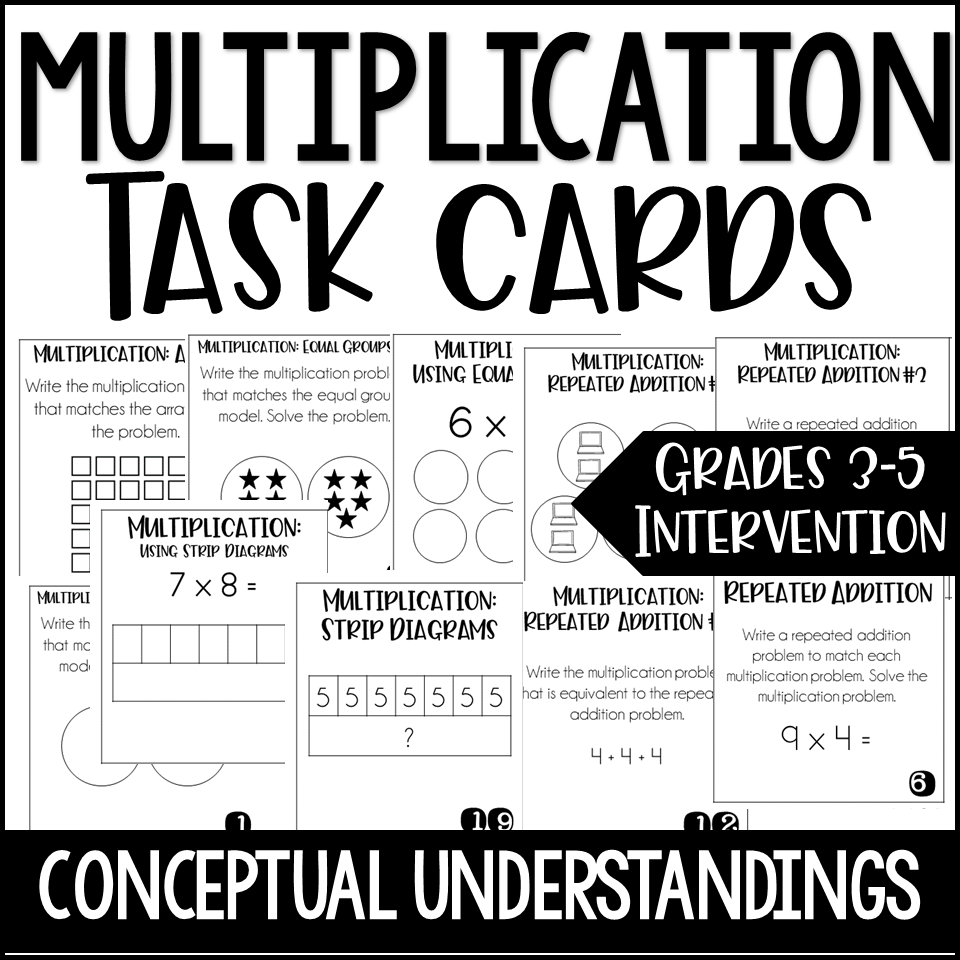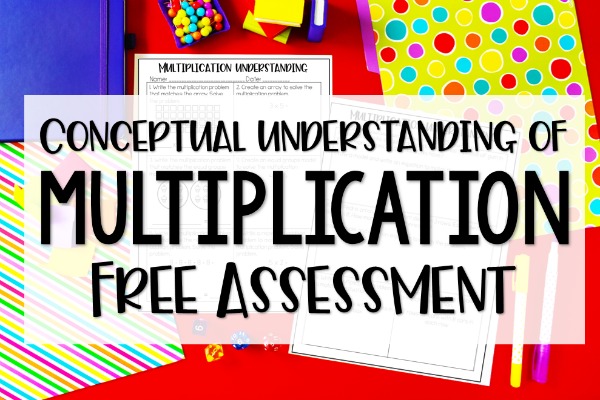One of the biggest struggles with teaching 4th and 5th grade math is that a lot of our students don’t know their multiplication facts. They don’t have their multiplication facts memorized and (more importantly) they don’t have strategies to find the answer quickly. Students often struggle with multiplication fact fluency and automaticity because they lack a conceptual understanding of multiplication. This post shares a quick 2-page multiplication intervention assessment that I use to assess gaps in my students’ conceptual understanding of multiplication.

About the Multiplication Assessment
The multiplication assessment will help you pinpoint gaps in your students’ conceptual multiplication understanding.
By finding and addressing these gaps, we can better help our students solve multiplication problems and facts that they do not have memorized through multiplication strategies and using known facts. A lot of times students fail to understand the multiplication strategies we teach (add a group, take a group away, etc.) because they don’t have a solid understanding of what multiplication is.
Here are the conceptual multiplication skills included in the assessment (Each conceptual multiplication skill is assessed in two ways.) :
- Arrays
- Equal Groups
- Repeated Addition
- Understanding multiplication contexts/situations
I recommend giving this to any 4th or 5th grade student who struggles with their multiplication facts or 3rd grade students who struggle with multiplication after strong instruction.
Using Assessment Results for Multiplication Intervention
I use this assessment to group my students for quick and targeted multiplication intervention lessons. Our time is limited and 4th and 5th grade so we need any time spent on math intervention to be purposeful and intentional. Using this multiplication assessment will help you group your students according to their gaps and instruct them accordingly.
If you need a multiplication intervention resource that works perfectly with this assessment, click below to check out my Multiplication Intervention Task Cards for Conceptual Understanding. I created these conceptual multiplication task cards to be an extension of my multiplication intervention mini-lessons. For example, I will teach a small group lesson on representing multiplication with arrays and then the students will complete the task cards with me, as a math center, with partners, or independently.
Shop This Post

Multiplication Intervention Task Cards | Multiplication Conceptual Understanding
Over 300 multiplication task cards to help you build conceptual understanding of multiplication with your studentsHere is a detailed list of the conceptual multiplication skills included in the resource above. Each skill includes a task card set of 24 task cards:
- Writing the multiplication problem that matches the array and then solving. (Use if the students miss questions #1 or #2)
- Using cubes or other small objects to create arrays, writing multiplication problems, and solving. (Use if the students miss questions #1 or #2)
- Finishing array models to represent multiplication problems shown. Then solving the multiplication problems. (Use if the students miss questions #1 or #2)
- Writing the multiplication problems that match the equal groups models and then solving the problems. (Use if the students miss questions #3 or #4)
- Writing the multiplication problems that match the equal groups models and then solving the problems. (Use if the students miss questions #3 or #4)
- Using cubes or other small objects to create equal group models, writing multiplication problems, and solving. (Use if the students miss questions #3 or #4)
- Finishing equal groups models to represent the multiplication problems shown. Then solving the multiplication problems. (Use if the students miss questions #3 or #4)
- Writing the multiplication problem that matches the strip diagram and then solving.
- Creating a strip diagram to model situations. Then writing multiplication problems and solving.
- Finishing strip diagram models to represent the multiplication problems shown. Then solving the multiplication problems.
- Writing repeated addition problems to match models. Optional version includes writing matching multiplication problems as well. (Use if the students miss questions #5 or #6)
- Writing repeated addition problems and multiplication problems to match situations. (Use if the students miss questions #5-#10)
- Writing multiplication problems to match repeated addition problems.(Use if the students miss questions #5 or #6)
Download the FREE Multiplication Intervention Assessment Here
Click here or on the image below to download the free multiplication intervention assessment.








Leave a Comment